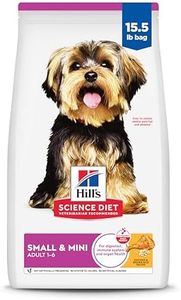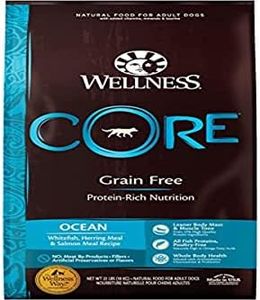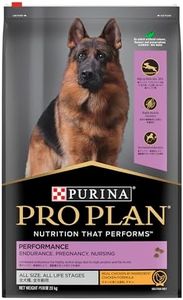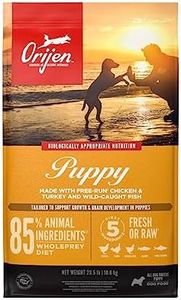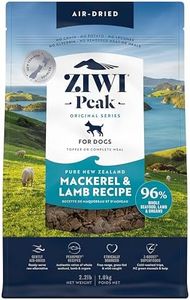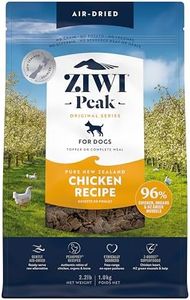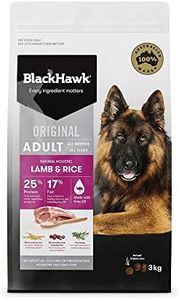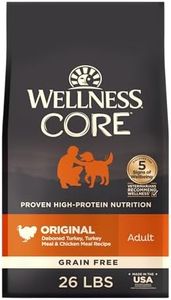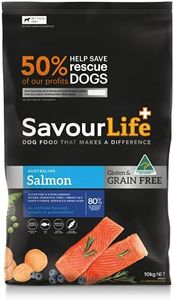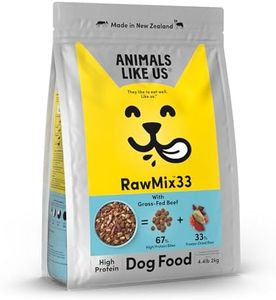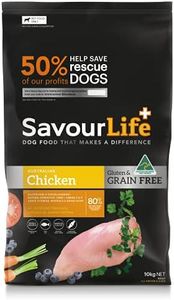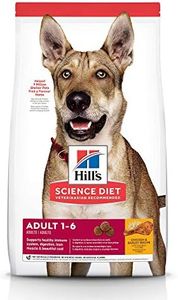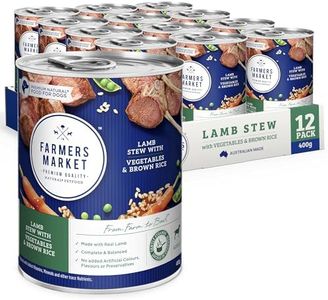We Use CookiesWe use cookies to enhance the security, performance,
functionality and for analytical and promotional activities. By continuing to browse this site you
are agreeing to our privacy policy
10 Best High Protein Dog Foods
From leading brands and best sellers available on the web.By clicking on a link to a third party's website, log data is shared with that third party.
Buying Guide for the Best High Protein Dog Foods
Choosing the right high-protein dog food for your pet is important for their health, energy levels, and wellbeing. High-protein foods can be beneficial for active dogs, working dogs, or those needing muscle support. When selecting a product, it's helpful to understand which specs matter, why they are important, and how to match them to your dog's needs. By looking into protein content, protein sources, ingredient quality, grain content, and special dietary considerations, you can choose a food that best supports your dog’s unique requirements.Protein PercentageProtein percentage refers to the proportion of protein in the food, usually labeled as a percentage of the total weight. This is important because protein is essential for maintaining your dog’s muscles, tissues, and immune system. Values typically range from around 18% for standard adult formulas up to 30% or more for high-protein options. For average adult dogs, a moderate protein range is sufficient, but very active, working, or growing dogs may benefit from higher levels. Senior or less active dogs generally do not need high levels of protein unless advised by a vet. Choose the protein percentage that aligns with your dog’s activity level, age, and health status.
Protein SourceProtein source refers to where the protein in the food comes from, such as chicken, beef, fish, lamb, or plant-based ingredients. Animal-based proteins generally provide a more complete amino acid profile, which is crucial for your dog’s body functions. It’s important to check if the food lists a named animal protein as one of the first ingredients, as this usually signals higher quality. Dogs with allergies or sensitivities may require limited ingredient diets or novel proteins. Consider your dog’s preferences, allergies, and digestibility when deciding on the main protein source.
Ingredient QualityIngredient quality speaks to the overall standard of the ingredients used in the dog food. This matters because higher quality whole ingredients tend to be more nutritious, digestible, and safer for your pet. The ingredient list provides clues—look for foods that emphasize whole meats and minimize fillers or artificial additives. Foods that specify 'real meat,' 'whole grains,' or named fats are often better choices. If your dog has sensitivities or a delicate stomach, prioritize foods with straightforward, wholesome ingredient lists.
Grain ContentGrain content distinguishes between grain-free and grain-inclusive recipes. Grains like rice, barley, or oats can provide energy and nutrients for many dogs, but some dogs have sensitivities or allergies to certain grains. Grain-free foods replace grains with sources like potato or legumes. If your dog has a known grain allergy, a grain-free food may be a better fit, but otherwise, grain-inclusive foods are suitable for most dogs. Consider your dog’s medical history and any guidance from your veterinarian when choosing between grain types.
Special Dietary ConsiderationsSpecial dietary considerations include features like being suitable for puppies, seniors, overweight dogs, or dogs with medical needs. These formulas are tailored for different stages of life, sensitivities, or conditions, and may feature specific protein and fat levels, added supplements, or unique protein sources. It’s important to match the food to your dog’s current status—puppy foods for growing dogs, senior formulas for older pets, or specialty foods for issues like joint health, allergies, or sensitive stomachs. Evaluate your dog’s age, activity, and health case-by-case to pick a formula that will truly support them.
